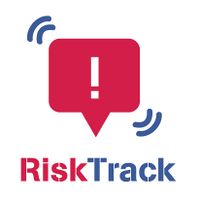Tracking tool based on social media for risk assessment on radicalisation
RiskTrack project
To help in the prevention of terrorism through the identification of radicalisation. |
|
Overall objective(s)
To identify and tackle the factors or indicators that raise a red flag about which individuals or communities are being radicalised and recruited to commit violent acts of terrorism.
|
Specific objective(s)
In particular it will aim to:
|
General Description
In 2001 began a new century under constant threat for the West by national and international terrorists under religious extremism such as jihadism, which advocates a new world order. After the 11-S attacks in the USA, in Europe as many attacks as aftershocks of an earthquake followed. And now, as in the tsunami emerged from the earthquake, the Islamic State is spreading its new forms of terror (Garriga, 2005). Although different contacts with other types of terrorism can bring common traits in understanding and responding to the new jihadist terrorism, the truth is that it is necessary to describe, apart from the causes of this phenomenon, another differentiator from other types of terrorism: the radicalisation of its militants. To do this, it is extremely relevant to describe, first, the characteristics of jihadist terrorism and the different stages through which an individual passes in his radicalisation, yet which ultimately can point out a series of actions to detect and prevent, within the possible, this radicalism. The striking magnitude of the violence carried out by these radicals with the intention of increasing the sense of vulnerability of Western societies and constant innovation in the attacks requires governments and responsible of counterterrorism to suit their capacity to adapt and change. This requires enormous efforts on the prevention which is the main objective of the project (Garriga, 2015). One of the European member states priorities is the commitment to jointly fight against terrorism to ensure the protection of its citizens and their fundamental rights. Thus, since 2005, the European Council has set into place an EU Counter-terrorism Strategy. This strategy relies on four main pillars: prevent, protect, pursue and respond, always in the framework of European cooperation. In 2014 the Council revised the strategy presenting guidelines that set out a series of measures to be implemented by the EU and member states (Council of the European Union, 2005; European Commision, 2015). This project aims to particularly help in the prevention of terrorism through the identification of radicalisation. In line with the EU priorities in this matter, we will identify the factors or indicators that raise a red flag about which individuals or communities are being radicalised and recruited to commit violent acts of terrorism. Needs assessmentFrom previous statements of the problem to be addressed there exists a clear necessity to design and develop new methodologies for a risk assessment on radicalisation of individuals and groups of individuals that are using Internet and their extremely popular applications based on Social Media to radicalise and recruit European citizens that later could be part of terrorist cells. On the other hand, any risks assessment methodology will need from a specific software tool, which using the latest and mature technologies from ICT, could be used to provide an adequate framework for terrorism and human behaviour experts to analyse the huge amount of information available in the mentioned sources. |
